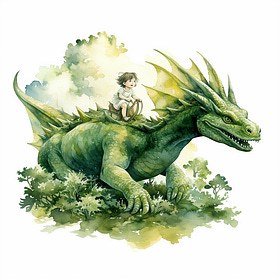Increasingly, we are using the vivid expression "prickly" less and less to describe surly, tough people. Yet, this descriptor very aptly suggests what to expect if we dare to get too close to them. Most people won’t take that risk. They prefer to avoid those sharp, unfriendly thorns. Similarly, many dislike cacti even though a majority of them occasionally reward caregivers with dazzling, albeit short-lived, flowers.
Few know that cacti originally began as thorny shrubs. However, as their habitat became arid, these plants had to adapt. They shed their lush, succulent leaves, which evaporated too much water, leaving only thorns behind. Inside the cactus, if one manages to navigate past those thorns, is a very much alive, feeling, fleshy core. Similarly, the inner world of the “cactus people” is also diverse and vibrant, but they hide it well from their surroundings, often leading to solitary lives.
Most of these prickly individuals transform into “cactus people” during their childhood. Haven’t we all encountered exceptionally aggressive, intolerably temperamental, inexplicably silent, unaccountably shy, or easily offended kids in our surroundings? When we see such a child, we often look down upon or judge the parent. If it’s our child, we face the problem with frustration and despair. The reality is that the child has simply adapted to their circumstances — much like cacti — and grown some form of thorns for survival. In these situations, our task is to find out what they lack, ideally before any trauma from that deprivation develops.
How not to raise a cactus child?
Here are three useful tips:
It’s vital to understand the emotional needs a child has for healthy development. After all, when we bring home a plant from a nursery, we usually get informed about its water and light requirements and how to care for it. A child’s emotional world is far more intricate than a plant’s physical needs, so parenthood demands greater preparation.
We need to discover how to meet these needs most effectively, in ways that are most easily absorbed by the child. Just as some plants need watering from below while others require misting, each child has their own love language through which they best communicate. The challenge here can be when the love languages of parents and children differ. In such cases, we must ensure that we communicate in the child’s love language, even if it feels unnatural to us.
Try playing games with the child where they can quickly learn to pay attention to their own feelings, interpret them, and express them clearly to another. For instance, role-playing games where a child imagines themselves as a character and tells an adult how that character feels or thinks in various situations. The sooner a young child learns this, the easier life becomes with them. Instead of witnessing unarticulated and seemingly baseless tantrums, we’ll understand the real issue — even if it’s communicated through tears or outbursts.
Remember, constantly recurring tantrums, aggression, resentment, sadness, and shyness always have a reason. It’s the parent’s duty to find out what their child lacks. Let’s not raise cactus children, for we all know how challenging it is to deal with prickly adults later on.
– Eszter
Related Articles
Love Languages
Fairy Tale Game — How Do We Teach Our Child to Feel and Communicate Their Real Emotions?
Home | Notes | Articles | Eszter’s Magic | Literary Bonbons | Short Stories and Guides | Beyond the Book | EWE Issues | Archive | About






